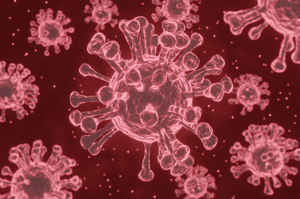Introduction:
Stem cells, the body’s versatile repair agents, evolve from embryonic omnipotence to adult specialization, promising groundbreaking medical advancements.
Key Takeaways:
- Embryonic stem cells can transform into any cell type, offering unparalleled versatility for medical applications.
- Adult stem cells, while more limited, can still differentiate into specialized forms, such as epithelial, hematopoietic, mesenchymal, neural, and skin stem cells.
- Research is exploring how to enhance adult stem cells’ versatility, potentially expanding their medical uses.
- Harvesting adult stem cells, considered more ethical than embryonic, involves a donor process akin to blood donation.
What types of stem cells are found in adults?
Adults have five main types of stem cells: epithelial, hematopoietic (blood), mesenchymal, neural, and skin stem cells. These cells specialize in converting into specific forms, crucial for various medical treatments and research into regenerating damaged tissues and organs.
Embryonic Stem Cells vs Stem Cells in Adults
Stem cells are cells that have the ability to convert themselves into other types of cells. They play a vital role in keeping the body in good repair. Stem cells develop in the embryo and remain in the body through adulthood. The nature of stem cells does, however, change over this time. In very simple terms, embryonic stem cells are even more versatile than stem cells in adults. They can convert themselves into any type of cell. Stem cells in adults are more mature. As they mature they become less versatile. Instead of being able to convert themselves into anything, stem cells in adults can only convert themselves into one of a range of specialist forms. That said, this is still an extremely useful ability with a huge range of medical applications.
What Type of Stem Cells are Found in Adults?
The answer to the question “what type of stem cells are found in adults?” depends on your point of view. You could say that stem cells are stem cells and hence that all stem cells in adults belong to the same type. Alternatively, you could say that adult stem cells generally convert themselves into one of five main forms, and hence there are five types of adult stem cells.
These are:
- Epithelial Stem Cells
- Hematopoietic Stem Cells (Blood Stem Cells)
- Mesenchymal Stem Cells
- Neural Stem Cells
- Skin Stem Cells
Additionally, scientists are researching the possibility of essentially retraining adult stem cells to convert themselves into alternative forms. This research is in its very early stages but could open up even more exciting possibilities in the future.
Harvesting Adult Stem Cells:
From a donor’s perspective, the process of harvesting adult stem cells is very similar to the process of donating blood. The donor will generally be given medication to stimulate the production of stem cells. This will typically be started around four days before the donation. On the day of the donation, the donor will give blood in much the usual way. Medical professionals will then separate the stem cells from the rest of the blood. In contrast to regular blood donation, however, the rest of the blood is usually then returned to the donor. Harvesting adult stem cells may be considered to be more ethical than harvesting stem cells from embryos. This is because an adult is able to give informed, active consent whereas an embryo is not.
Medical Uses for Stem Cells:
There are two main areas in which stem cells are extremely useful. Firstly, they aid research into the medical conditions. Stem cells can not only help researchers to identify what triggers medical conditions. They can also be useful for testing potential new cures. Secondly, stem cells can also be used in the area of regenerative medicine. This area of medicine essentially uses science to help the body’s ability to repair itself. Orthobiologic stem cell therapy can be used to create replacements for damaged cells. Scientists are even looking at using them to create replacements for damaged organs.
Recent Blogs
Why Physical Therapy Should Be Your Secret Weapon Before Surgery
Surgery, while sometimes necessary, can be a daunting prospect. The recovery process is often lengthy and filled with unknowns. But what if there was a way to optimize your body's readiness for surgery and [...]
Spinal Decompression Therapy: A Non-Surgical Option for Herniated Discs
The discs in your spine act as cushions between the vertebrae, providing flexibility and absorbing shock. When the outer wall of a disc weakens or tears, the soft inner core can bulge or push [...]
PRP for Knees_ A Promising Option for Pain Relief and Mobility – word
For many people, knee pain is a constant companion, limiting mobility and impacting quality of life. Traditional treatments like pain medication and physical therapy can offer relief, but they may not address the underlying [...]




